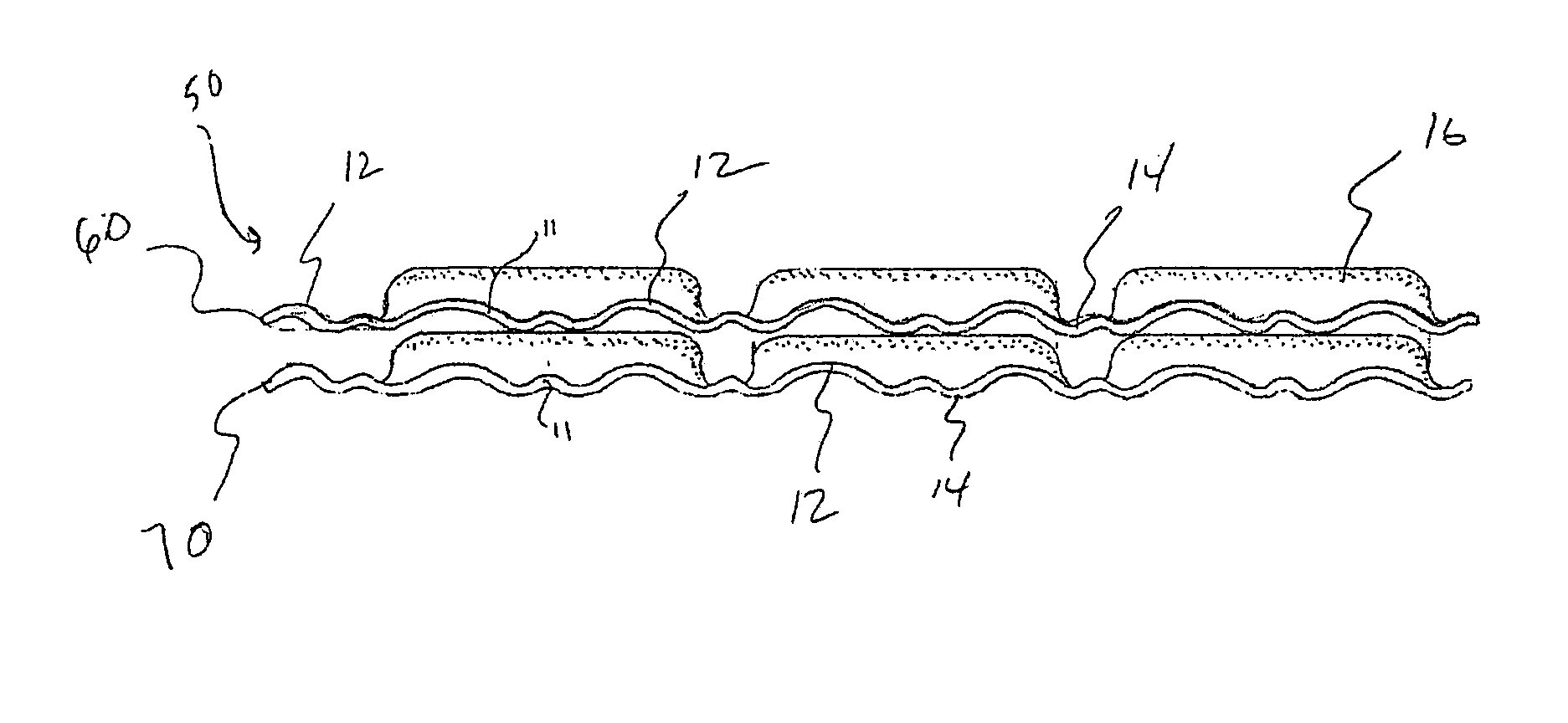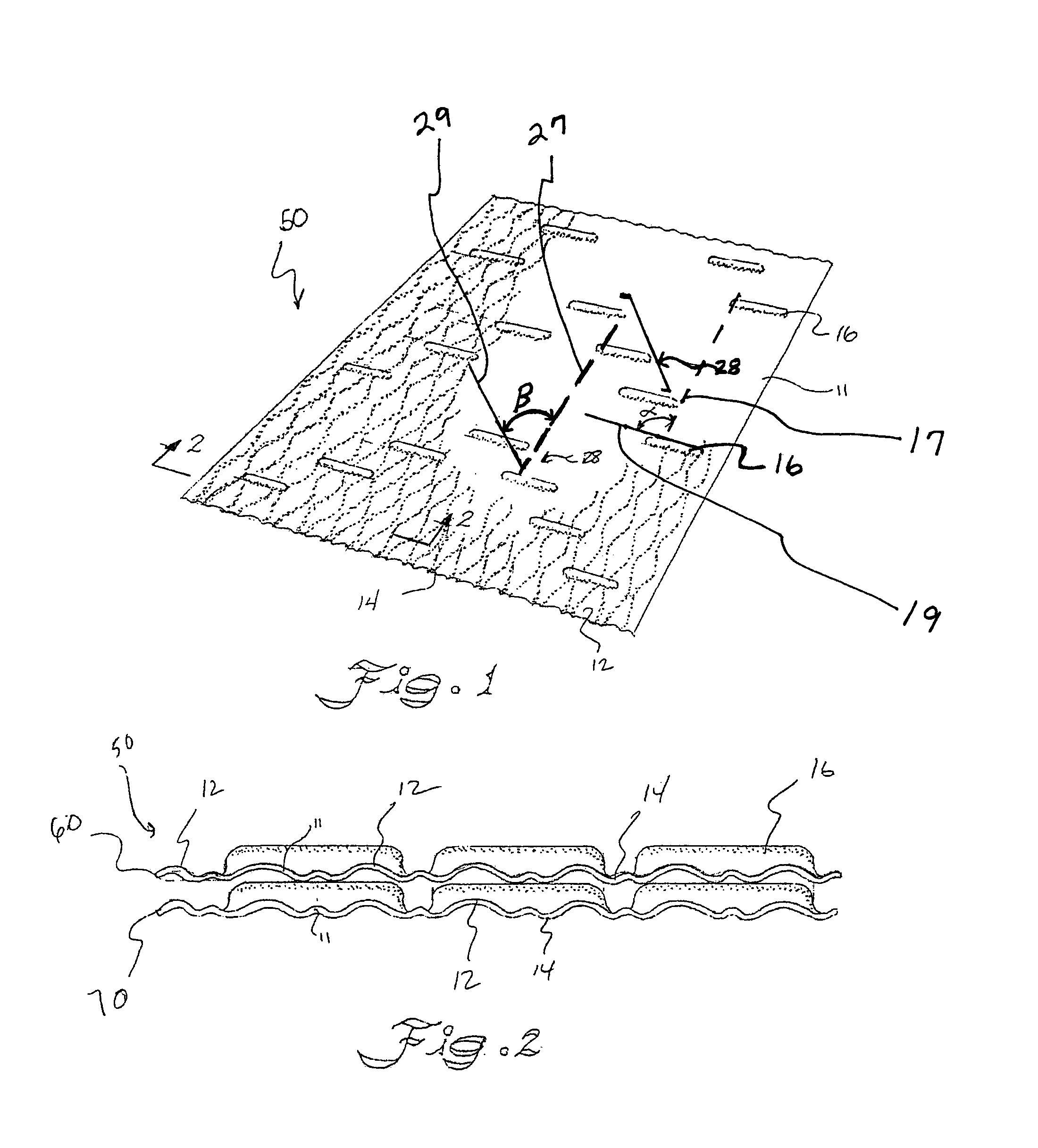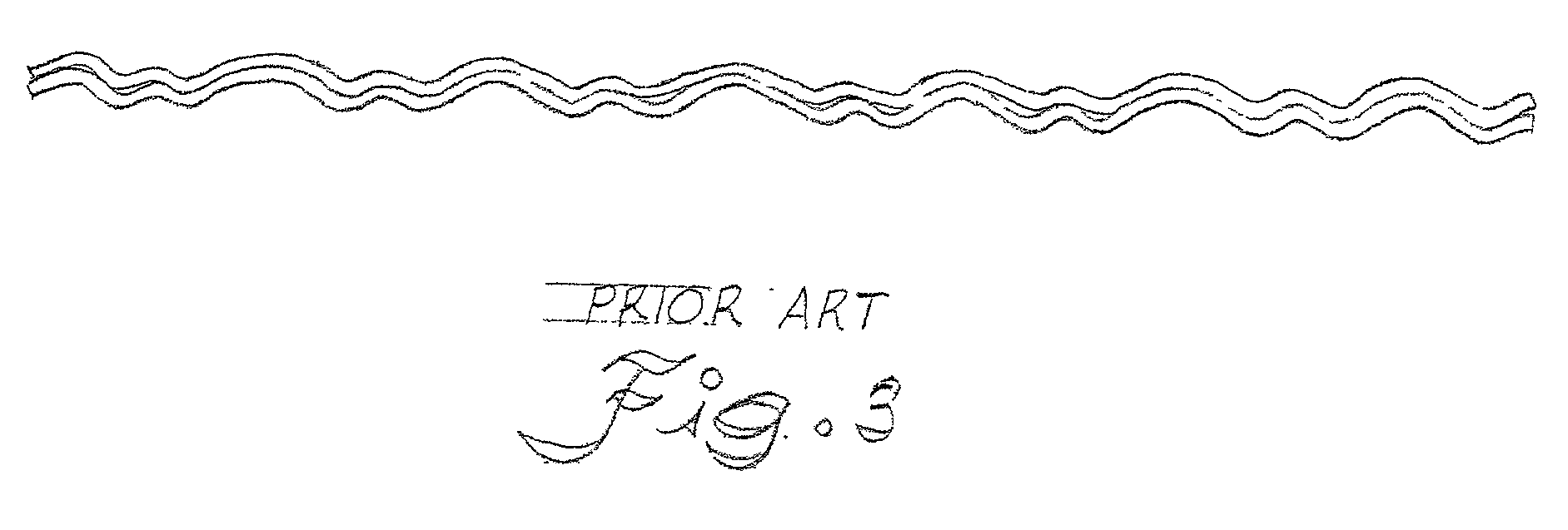Method for reducing nesting in paper products and paper products formed therefrom
a paper product and paper product technology, applied in the field of paper product and paper product nesting reduction, can solve the problems of increasing the density of the roll, reducing the bulk of the roll, and less consistent and controllable winding of the product, so as to inhibit the nesting
- Summary
- Abstract
- Description
- Claims
- Application Information
AI Technical Summary
Problems solved by technology
Method used
Image
Examples
example 1
[0053]A finished product sheet was made as described above and shown in FIGS. 4 and 5. Specifically, a non-layered basesheet was made in which the furnish was comprised of 75% of LL-19 softwood pulp fibers and 25% of bleached chemical thermomechanical (BCTMP) softwood pulp fibers. The sheet was formed on a forming fabric having a ridge spacing of approximately 0.125 inches. The sheet was then subjected to steel-on-rubber cross-directional bar embossing with an embossing roll at 75 pounds per linear inch. Once embossed, the sheet was dried and wound onto cores to form rolls of paper towels.
[0054]The embossing pattern utilized is shown in FIG. 6 and included embossing elements having the following dimensions:
[0055]
Length:0.40625″Width:0.030″Height:0.045″Area per element:0.0121875 in29 elements in 6.5 cross directional inches0.75 inches between rows of emboss% area of emboss:2.7%
[0056]A product using the same sheet described above was also prepared for comparison, but rather than being...
example 2
[0068]Three sets of paper towel rolls were formed. The first two sets of rolls were formed as described in Example 1, and included both embossed and calendered rolls.
[0069]The third set of rolls were non-layered single-ply towels made in from a furnish comprised of 75% LL-19 softwood pulp fibers and 25% bleached chemical thermomechanical (BCTMP) softwood pulp fibers. The sheet was formed on a forming fabric having a ridge spacing of approximately 0.2 inches. The sheet had a significantly greater amount of cross-direction ridges than the sheet formed in Example 1. Once embossed, the web was dried and wound onto a standard roll to form the final product. The third set of rolls was steel-on-steel calendered at a gap of 0.003 inches prior to winding. Comparison of five rolls for each condition is summarized below in Table 4. Roll firmness and the % of wraps nested were determined as set forth in Example 1.
[0070]
TABLE 4Sample CharacteristicsRoll Firmness% wraps nested(mm)Diameter of roll...
example 3
[0071]A first basesheet was described above and shown in FIGS. 4 and 5. Specifically, a non-layered basesheet was made in which the furnish was comprised of 75% of LL-19 softwood pulp fibers and 25% of bleached chemical thermomechanical (BCTMP) softwood pulp fibers. The basesheet was formed on a forming fabric having a ridge spacing of approximately 0.125 inches. The basesheet was then subjected to cross-directional bar embossing roll at various pressures. The embossing pattern utilized is shown in FIG. 7 and included embossing elements having the following dimensions:
[0072]
Length:0.4375″Width:0.030″Height:0.060″Area per element:0.118125 in29 elements in 6.5 cross directional inches0.75 inches between rows of embossing elements% area of emboss:2.4%
[0073]A second basesheet (Sample B) was also made as described above and shown in FIGS. 4 and 5. Specifically, a non-layered basesheet was made in which the furnish was comprised of 75% of LL-19 softwood pulp fibers and 25% of bleached che...
PUM
| Property | Measurement | Unit |
|---|---|---|
| angle | aaaaa | aaaaa |
| length | aaaaa | aaaaa |
| length | aaaaa | aaaaa |
Abstract
Description
Claims
Application Information
 Login to View More
Login to View More - R&D
- Intellectual Property
- Life Sciences
- Materials
- Tech Scout
- Unparalleled Data Quality
- Higher Quality Content
- 60% Fewer Hallucinations
Browse by: Latest US Patents, China's latest patents, Technical Efficacy Thesaurus, Application Domain, Technology Topic, Popular Technical Reports.
© 2025 PatSnap. All rights reserved.Legal|Privacy policy|Modern Slavery Act Transparency Statement|Sitemap|About US| Contact US: help@patsnap.com



